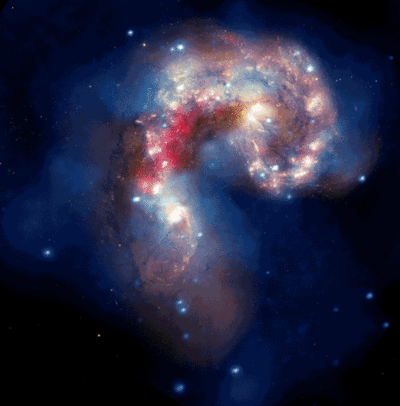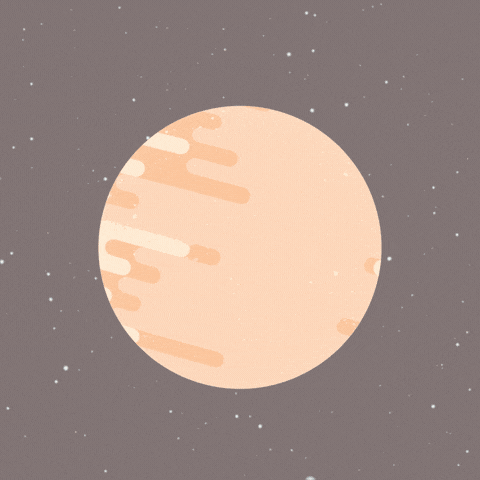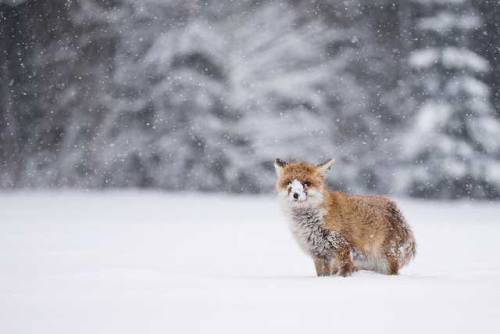Spinatlasagne-blog - Spinatlasagne

More Posts from Spinatlasagne-blog and Others






Astronomy From 45,000 Feet
What is the Stratospheric Observatory for Infrared Astronomy, or SOFIA, up to?

SOFIA, the Stratospheric Observatory for Infrared Astronomy, as our flying telescope is called, is a Boeing 747SP aircraft that carries a 2.5-meter telescope to altitudes as high as 45,000 feet. Researchers use SOFIA to study the solar system and beyond using infrared light. This type of light does not reach the ground, but does reach the altitudes where SOFIA flies.

Recently, we used SOFIA to study water on Venus, hoping to learn more about how that planet lost its oceans. Our researchers used a powerful instrument on SOFIA, called a spectrograph, to detect water in its normal form and “heavy water,” which has an extra neutron. The heavy water takes longer to evaporate and builds up over time. By measuring how much heavy water is on Venus’ surface now, our team will be able to estimate how much water Venus had when the planet formed.

We are also using SOFIA to create a detailed map of the Whirlpool Galaxy by making multiple observations of the galaxy. This map will help us understand how stars form from clouds in that galaxy. In particular, it will help us to know if the spiral arms in the galaxy trigger clouds to collapse into stars, or if the arms just show up where stars have already formed.

We can also use SOFIA to study methane on Mars. The Curiosity rover has detected methane on the surface of Mars. But the total amount of methane on Mars is unknown and evidence so far indicates that its levels change significantly over time and location. We are using SOFIA to search for evidence of this gas by mapping the Red Planet with an instrument specially tuned to sniff out methane.

The plumes, illustrated in the artist’s concept above, were previously seen in images as extensions from the edge of the moon. Next our team will use SOFIA to study Jupiter’s icy moon Europa, searching for evidence of possible water plumes detected by the Hubble Space Telescope. The plumes were previously seen in images as extensions from the edge of the moon. Using SOFIA, we will search for water and determine if the plumes are eruptions of water from the surface. If the plumes are coming from the surface, they may be erupting through cracks in the ice that covers Europa’s oceans. Members of our SOFIA team recently discussed studying Europa on the NASA in Silicon Valley Podcast.

This is the view of Jupiter and its moons taken with SOFIA’s visible light guide camera that is used to position the telescope.
Make sure to follow us on Tumblr for your regular dose of space: http://nasa.tumblr.com
Cool Space GIFs from the Internet
There’s a lot of historical and archived space footage on the internet and we’re excited to see that the public (you!) have taken it to create many other products that teach people about exploration, space and our universe. Among those products are GIFs. Those quick videos that help you express what you’re trying to say via text, or make you laugh while surfing the web.
Are space GIFs the new cat videos of the internet? Don’t know, but we sure do like them!
Here are a few neat space GIFs from the internet…
This GIF of the Cat Eye Nebula shows it in various wavelengths…

Followed by a GIF of a cat in space…floating in front of the Antennae galaxies…

One time, a frog actually photobombed the launch of our LADEE spacecraft…someone on the internet gave him a parachute…

Want to see what it’s like to play soccer in space? There’s a GIF for that…

There are also some beautiful GIFs looking through the Cupola window on the International Space Station…


This warped footage from the International Space Station gives us ride around the Earth…

While this one encourages us to explore the unknown…

When our New Horizons spacecraft flew by dwarf planet Pluto in 2015, the internet couldn’t get enough of the Pluto GIFs…


NASA GIFs

Want to dive into a black hole of other fun space GIFs? Check out our GIPHY page HERE.
Want to use our GIFs?! You can! Our GIFs are accessible directly from the Twitter app. Just tap or click the GIF button in the Twitter tool bar, search for NASAGIF, and all NASA GIFs will appear for sharing and tweeting. Enjoy!
GIF Sources
Cat Eye GIF: https://giphy.com/gifs/astronomy-cZpDWjSlKjWPm Cat GIF: https://giphy.com/gifs/cat-HopYL0SamcCli Frog GIF: https://giphy.com/gifs/nasa-photo-rocket-NOsCSDT2rUgfK Soccer GIF: https://giphy.com/gifs/yahoo-astronauts-zerogravity-QF1ZomA11zofC Cupola 1 GIF: https://giphy.com/gifs/nasa-Mcoxp6TgvQm6A Cupola 2 GIF: https://giphy.com/gifs/timelapse-space-11f3o8D2rQWzCM Earth GIF: http://giphy.com/gifs/earth-milky-way-international-space-station-ONC6WgECm5KEw Explore GIF: https://giphy.com/gifs/text-timelapse-lapse-Vj7gwAvhgsDYs Pluto 1 GIF: https://giphy.com/gifs/l46CzjUnYFfeMXiNO Pluto 2 GIF: https://giphy.com/gifs/pluto-dbV1LkFWWob84
Make sure to follow us on Tumblr for your regular dose of space: http://nasa.tumblr.com


“Why is my face cold?”
Photo by Pavel Blažek

(sources)

“Hub” by Amaury Bündgen.

ART: “Refueling Spaceship (sketch)” by sparth .

Cute Fluff
Photo by Roeselien Raimond
-
 ana-does-art liked this · 1 year ago
ana-does-art liked this · 1 year ago -
 alain-fromentin reblogged this · 3 years ago
alain-fromentin reblogged this · 3 years ago -
 alain-fromentin liked this · 3 years ago
alain-fromentin liked this · 3 years ago -
 trplchngr reblogged this · 3 years ago
trplchngr reblogged this · 3 years ago -
 anna-skeleton liked this · 5 years ago
anna-skeleton liked this · 5 years ago -
 justcybertronianthings reblogged this · 5 years ago
justcybertronianthings reblogged this · 5 years ago -
 magpie-jaybird reblogged this · 6 years ago
magpie-jaybird reblogged this · 6 years ago -
 yr5a reblogged this · 6 years ago
yr5a reblogged this · 6 years ago -
 yr5a liked this · 6 years ago
yr5a liked this · 6 years ago -
 pastelpinkeuphony reblogged this · 6 years ago
pastelpinkeuphony reblogged this · 6 years ago -
 gamer45245blog liked this · 7 years ago
gamer45245blog liked this · 7 years ago -
 austinsilentium reblogged this · 7 years ago
austinsilentium reblogged this · 7 years ago -
 austinsilentium liked this · 7 years ago
austinsilentium liked this · 7 years ago -
 radulfr96 reblogged this · 7 years ago
radulfr96 reblogged this · 7 years ago -
 patterncrystal reblogged this · 7 years ago
patterncrystal reblogged this · 7 years ago -
 patterncrystal reblogged this · 8 years ago
patterncrystal reblogged this · 8 years ago -
 vosianwonders reblogged this · 8 years ago
vosianwonders reblogged this · 8 years ago -
 medic-mum-blog1 liked this · 8 years ago
medic-mum-blog1 liked this · 8 years ago -
 sg-omegasky-shattered-knight reblogged this · 8 years ago
sg-omegasky-shattered-knight reblogged this · 8 years ago -
 sg-omegasky-shattered-knight liked this · 8 years ago
sg-omegasky-shattered-knight liked this · 8 years ago -
 striker-eureka liked this · 8 years ago
striker-eureka liked this · 8 years ago -
 taz-maniac08-blog liked this · 8 years ago
taz-maniac08-blog liked this · 8 years ago -
 victorpcorona liked this · 8 years ago
victorpcorona liked this · 8 years ago -
 screechingtires reblogged this · 8 years ago
screechingtires reblogged this · 8 years ago -
 goofingoffblog liked this · 8 years ago
goofingoffblog liked this · 8 years ago -
 thattwirp liked this · 8 years ago
thattwirp liked this · 8 years ago -
 aesthetic-cybertron reblogged this · 8 years ago
aesthetic-cybertron reblogged this · 8 years ago -
 tenscreamingrobots reblogged this · 8 years ago
tenscreamingrobots reblogged this · 8 years ago -
 thewinterunicorn liked this · 8 years ago
thewinterunicorn liked this · 8 years ago -
 kaons-champion reblogged this · 8 years ago
kaons-champion reblogged this · 8 years ago -
 kaons-champion liked this · 8 years ago
kaons-champion liked this · 8 years ago -
 tentativetenderheart liked this · 8 years ago
tentativetenderheart liked this · 8 years ago -
 smbookworm26 liked this · 8 years ago
smbookworm26 liked this · 8 years ago -
 therestlessforest liked this · 8 years ago
therestlessforest liked this · 8 years ago -
 mswyntersblog reblogged this · 8 years ago
mswyntersblog reblogged this · 8 years ago -
 visionaryprime reblogged this · 8 years ago
visionaryprime reblogged this · 8 years ago -
 lightningspriteignite reblogged this · 8 years ago
lightningspriteignite reblogged this · 8 years ago -
 vector--prime reblogged this · 8 years ago
vector--prime reblogged this · 8 years ago -
 vector--prime liked this · 8 years ago
vector--prime liked this · 8 years ago -
 elitaxne reblogged this · 8 years ago
elitaxne reblogged this · 8 years ago